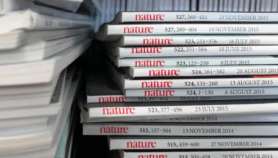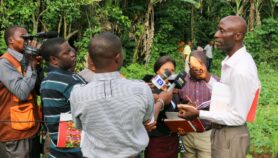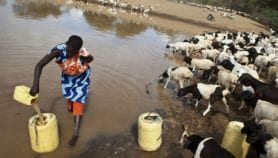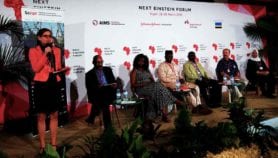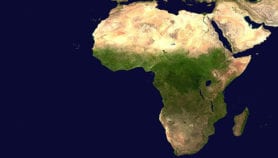Send to a friend
The details you provide on this page will not be used to send unsolicited email, and will not be sold to a 3rd party. See privacy policy.
Cássio Leite Vieira provides bite-sized tips on how to write about science — and please your editor.
In 1999, I published a 50-page booklet, ‘The Little Manual on Science Communication – Tips for Scientists and Science Communicators’. The venture arose from my work at Ciencia Hoje, a science communication magazine published by the Brazilian Association for the Advancement of Science.
Ciencia Hoje is similar in some ways to Scientific American. The magazine’s core is made up of articles written by scientists, and its aim has always been to foster accessible science writing. My job as a science editor at the magazine meant I had to ‘translate’ raw copy into language appropriate for lay readers.
However, the material I was receiving was often written in inappropriately difficult, technical language, and sometimes included complex formulas and obscure jargon. Another problem was that the magazine had no authors’ guide. So I prepared one. The result is the Little Manual: a set of basic, common sense rules for readership-oriented science writing.
The summary that follows is an adaptation of the manual — simple rules followed by a brief explanation. Perhaps the ‘back-to-basics’ nature of these rules is a reflection of the situation in Latin America, where writing for a non-specialised public is not as widespread in our scientific community as it is among researchers in Canada, Europe and the United States. Nevertheless, I hope they are helpful for scientists from other countries, as well as science writers and communicators abroad.
Be aware of different ‘languages’
The language in a science communication article must be different from that employed in a scientific paper. Incredibly, some members of the scientific community still fail to realise this.
Hook the reader
In science communication, the first paragraph or introduction are crucial in hooking the reader’s attention, and motivating them to read the rest of the text. Novels or short stories may generally save the best for last, but a science communication article needs to start with a bang — an attention-grabbing fact, question or the like.
Avoid scaring the reader off
A complex, science-heavy first paragraph or introduction, with formulas and difficult concepts, is an infallible recipe for making the reader abandon an article after the first few lines.
Use analogies wisely
Analogies are an essential element in science communication writing. The best describe concepts in the kind of day-to-day language the reader uses. However, when necessary, point out the analogy’s limits to the reader in order to avoid incorrect extrapolations.
For example, "According to science’s most famous formula, E = mc2 (E for energy, m for mass, and c for the velocity of light), one kilogram of matter would supply around 25 billion kWh, energy enough to guarantee Brazil’s current electric energy demand for 8 months. However, physicists still do not know how to transform matter into energy with an efficacy of 100 per cent, and, in practical terms, this percentage is very low. Even in an atomic bomb explosion, it is less than 1 per cent".
Be rigorous
Any information (scientific or not) must be precise. Always. In science communication, it is vital to distinguish speculation from tested results.
Aim at the target
Perhaps this is the most important of all the rules presented here: always have your audience in mind. Even Einstein did that (see the preface to Evolution of Physics). This rule is valid whatever the readership — children, laypeople, even experts.
Avoid formulas
Always aim to avoid formulas altogether. If you find you need to include a few, explain the meaning of the terms. Even known formulas such as E= mc2 should be explained. In the same vein, avoid chemical equations.
Remember that PhDs forget too!
Another thing to bear in mind is that even people with PhDs forget basic concepts from fields outside their own. So always explain concepts. After all, in science communication, no one wants to have to use a science dictionary just to read an article.
Use humour
Humour can make articles more enjoyable for the reader, ensuring they’ll want to read to the end. It is important not to offend readers, however, so use humour sensibly.
Avoid rococo style
Use straightforward, informal language. Remember: simple language is not incompatible with rich content.
Be succinct
Compare "It is expressly forbidden to smoke in this room" with "Don’t smoke". It’s easy to see which is preferable. Remember, space is precious in newspapers and magazines (see ‘Go for the right length’ below).
Avoid jargon
Avoid jargon altogether. It makes an article ‘heavier’. If you deem it absolutely necessary, explain the term parenthetically or in a glossary (see the next item).
Always explain
We said to avoid jargon. But it is almost impossible to avoid scientific concepts. So explain these in the simplest way possible. Examples: sodium chloride (salt); sodium hydroxide (caustic soda); mitochondria (cell’s energy factory).
Avoid using one scientific term to explain another, however, such as: fermions (particles that obey Fermi-Dirac statistics). When an explanation seems impossible, try a little bit harder. Use an analogy. Go at least partway towards explaining it — that’s better than keeping it unintelligible in the name of the preciousness.
Put complex concepts in a box
Need to describe something more complicated or technical? Put it in a box or side texts, and don’t forget to simplify technicalities sensibly.
Include who, what, where
Use "the Danish physicist Niels Bohr (1885-1962)" rather than "Bohr". Use "in 1998 the British physicist, Joe Olmi from the Department of Artificial Intelligence of the University of the United Kingdom, published an article on nanobots in the Journal of Robotics (vol 20, n 456, p 457 )…" rather than "According to Olmi (J. of Rob. 1998)…".
Write out acronyms once
Nobody is obliged to know acronyms. So, for example, use "the Brazilian Association for the Advancement of Science (BAAS)" rather than just "BAAS".
Use neither footnotes nor acknowledgments
There is no room for this in daily newspapers and magazines. Also, avoid bibliographical citations such as (Science 43 (6543): 53, 1992). These are generally useless for the lay reader. If you need to cite an article, use this formula: "[…], published in the American scientific journal Science (vol 43, no 6.543, 1992, p 53)".
Don’t encourage false hopes
In medical articles, ensure it is clearly stated when the treatments or medicines discussed are still undergoing trials, and are some way from general availability. Your reader (or one of their relatives) may have the illness you are writing about.
Obey the ‘space-time’ dictatorship
All media suffer from the so-called ‘space (or time) dictatorship’. In daily newspapers and magazines, for instance, the number of words written must fit the area reserved for your article. So be concise, and comfort yourself with the fact that even the Encyclopaedia Britannica does not contain all the information on any one subject.
Go for the right length
Write the number of words the editor asked you to write. Longer articles must be cut. Shorter ones must be enlarged (and some journalists say that enlarging is more difficult). The best way to avoid surprises is simply to ask the editor for the word count.
Suggest titles
Titles are the first thing to be read. Creating them is a kind of art performed generally by experienced editors (in newspapers, titles follow strict rules concerning the number of words). However, suggestions are always welcome by any editor.
Give the reader a break
Shorter paragraphs are preferable to longer. Daily newspapers generally use shorter ones. Even in writing for magazines, it is good sense to give your readers a break in their reading to allow them to think about what they have just read.
Send illustrations when you can
Whenever writing for a daily newspaper or a magazine, try to send good illustrations or, at least, to point out where the editor can track them down. High-resolution (300 dpi or higher) images are preferable. Avoid sending complicated graphics, schemes or tables; the majority of people find them hard to interpret.
Caption that image!
Once, while editing an article, I looked at the accompanying photo and called the creature in question a caterpillar. It was a fish. This kind of mistake is all too possible when images come without captions. So do not forget to caption your images.
Remember copyright
Never, ever forget to copyright a photograph. In the case of illustrations, tables, diagrams, schemes and so on, cite the source. If in doubt, consult the editor, who will probably know whether an image can be reproduced.
Include other perspectives
If possible, include another perspective on the issue under discussion in your article. The absence of it can give the reader the erroneous idea that your article is the final word on the subject.
Cássio Leite Vieira is the editor of Ciencia Hoje
This article was previously part of SciDev.Net’s e-guide to science communication and has been reformatted to become this practical guide.


